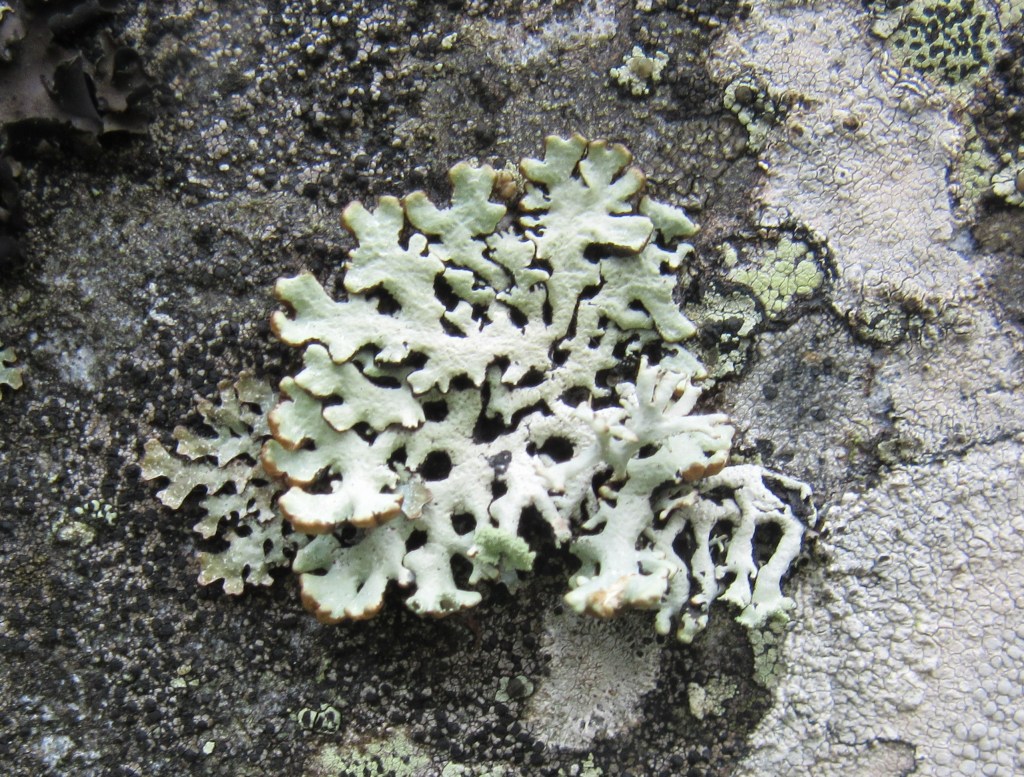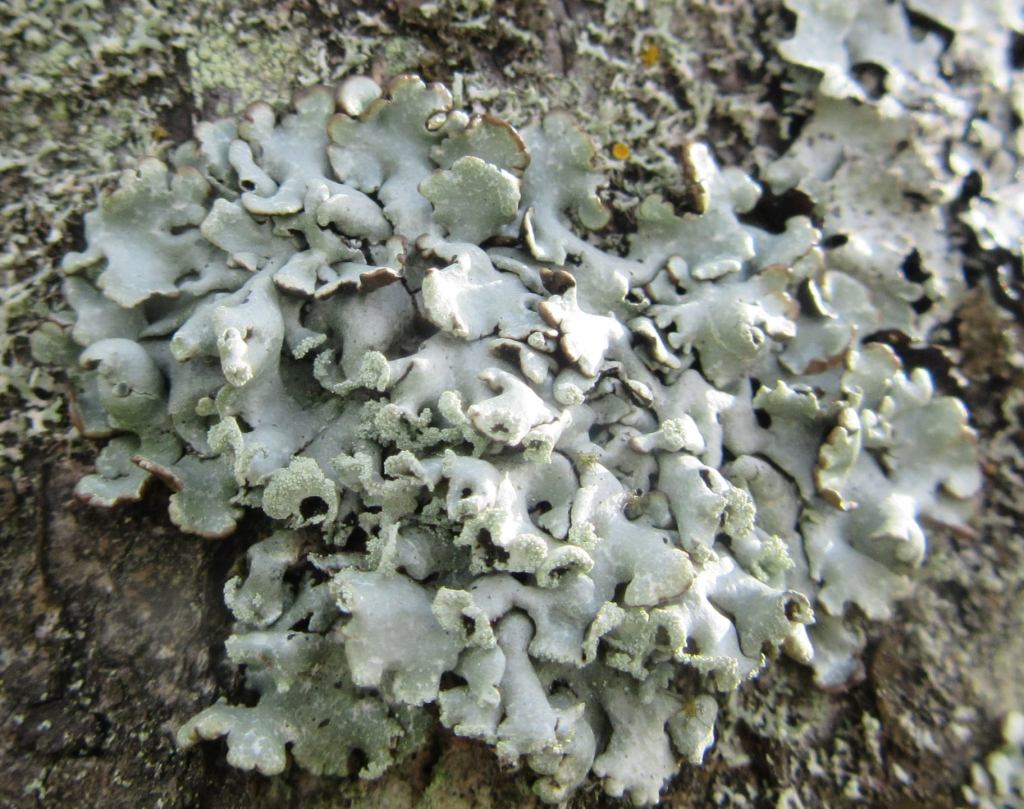A foliose species with grey to green-green radiating, hollow lobes that are either wide or long. Towards the tips of the lobes there are often black, dot-like pycnidia. This species is instantly recognisable when the inflated lobes turn up to reveal the chestnut brown under surface. The under surface becomes dark brown to black closer to the centre. Split lobe ends reveal lip-shaped soralia.
Cortex: K+ yellow. Medulla and soralia: C-, K-, UV+ pale violet-blue
Common and widespread in Scotland, Hypogymnia physodes is common on acid-barked trees, and often covers large parts of the trunk of Scots pine. It is also found on siliceous rock, such as dykes and granite gravestones. In the uplands and sand dunes it is also grows on heather stems and directly on the ground. BLS distribution map
Hypogymnia physodes can be distinguished from the similar looking Hypogymnia tubulosa by its flattened rather than tubular lobes and the brown under surface that is displayed when the lobe edges turn up.
Hypogymnia physodes is one of the foliose species that is most resistant to sulphur dioxide pollution.

